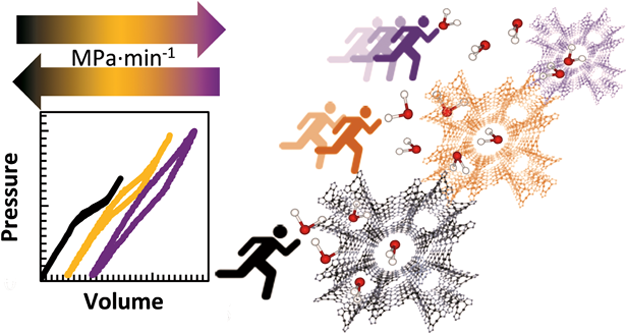
Alexander Lowe,† Nikolay Tsyrin,‡ Mirosław Chorążewski,† Paweł Zajdel,§ Michał Mierzwa,§,∥Juscelino B. Leao,⊥ Markus Bleuel,⊥,# Tong Feng,¶ Dong Luo,∇ Mian Li,¶ Dan Li,∇ Victor Stoudenets,‡ Sebastian Pawlus,§,∥ Abdessamad Faik,○ and Yaroslav Grosu*,○

Abstract: In this article, the effect of a porous material’s flexibility on the dynamic reversibility of a nonwetting liquid intrusion was explored experimentally. For this purpose, high-pressure water intrusion together with high-pressure in situ small-angle neutron scattering were applied for superhydrophobic grafted silica and two metal−organic frameworks (MOFs) with different flexibility [ZIF-8 and Cu2(tebpz) (tebpz = 3,3′,5,5′tetraethyl-4,4′-bipyrazolate)]. These results established the relation between the pressurization rate, water intrusion-extrusion hysteresis, and porous materials’ flexibility. It was demonstrated that the dynamic hysteresis of water intrusion into superhydrophobic nanopores can be controlled by the flexibility of a porous material. This opens a new area of applications for flexible MOFs, namely, a smart pressure-transmitting fluid, capable of dissipating undesired vibrations depending on their frequency. Finally, nanotriboelectric experiments were conducted and the results showed that a porous material’s topology is important for electricity generation while not affecting the dynamic hysteresis at any speed.
Keywords: flexibility, porous material, MOF, anti-vibration protection, smart working body, energy storage/dissipation
文章链接:![]() ACS Appl Mater Interfaces 2019 40842.pdf
ACS Appl Mater Interfaces 2019 40842.pdf




